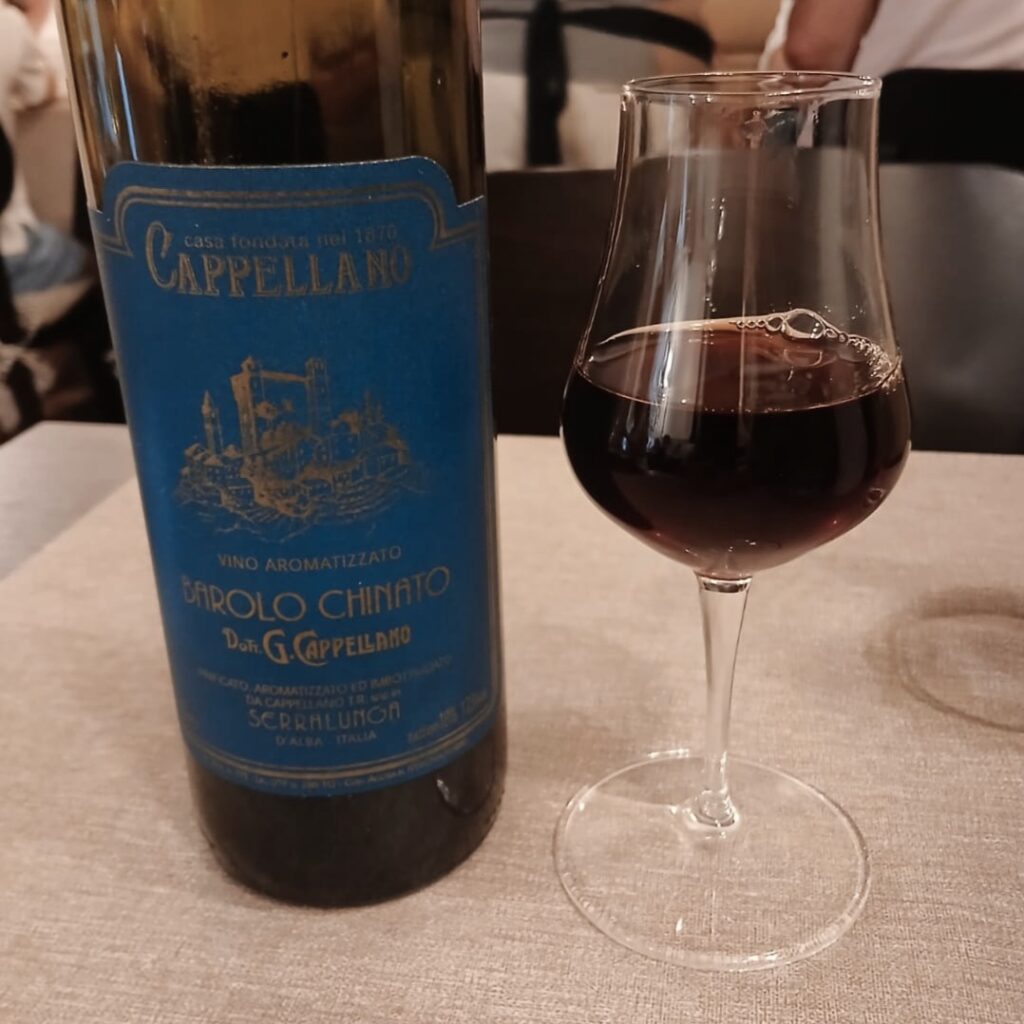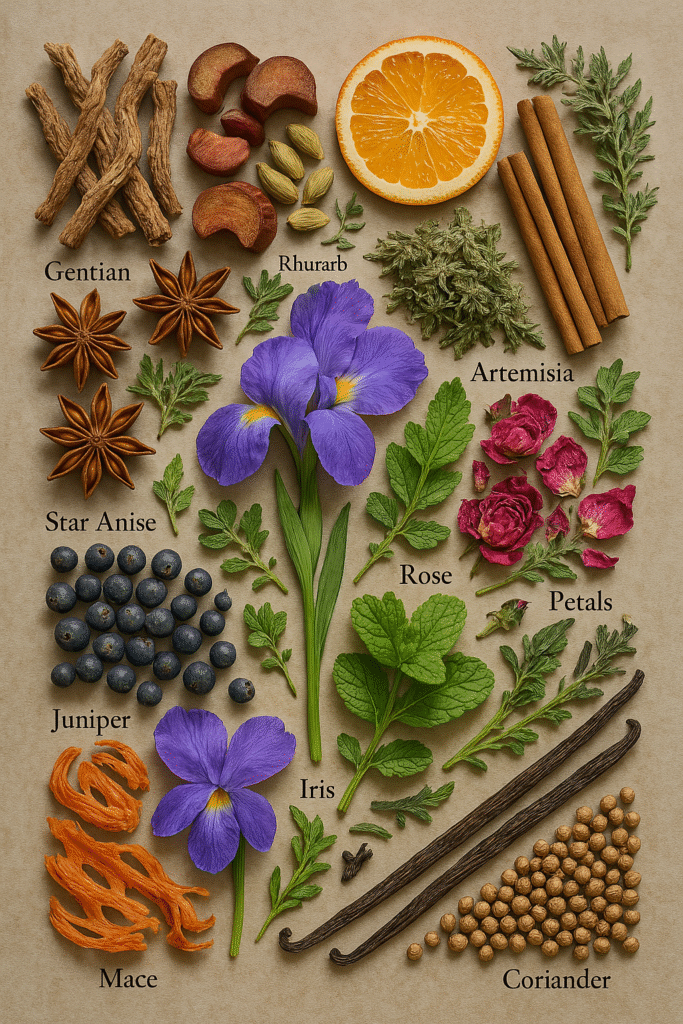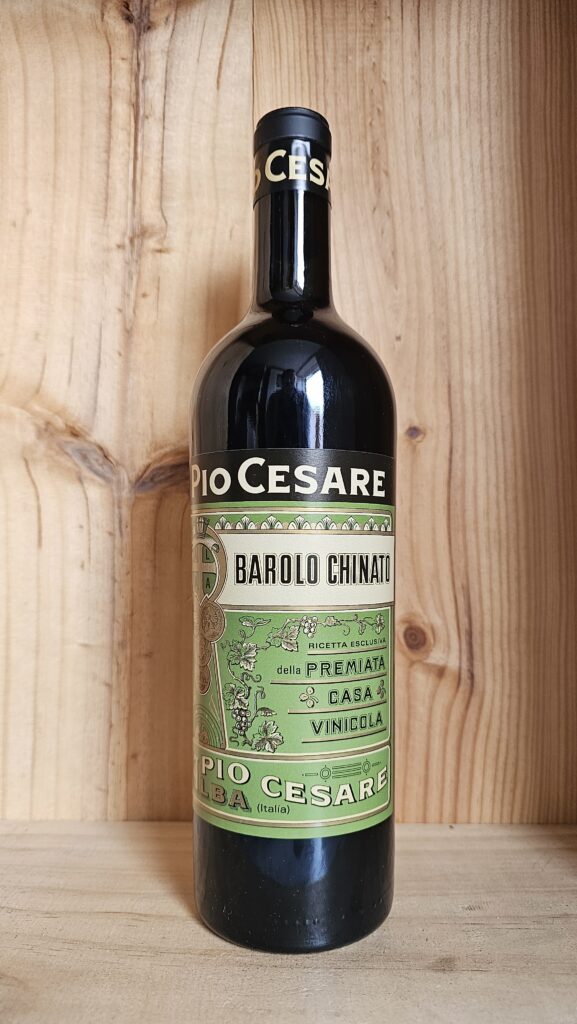Last date for Christmas orders is Tuesday 16th December. We will still despatch orders placed after the 16th but cannot guarantee that orders will be delivered by Christmas. Dismiss
Skip to content
Barolo Chinato is an aromatised, sweet, red wine from the Piedmont region of Italy, in this case from the Barolo DOCG wine-growing region. One can think of it as a type of Vermouth, made by infusing Barolo wine with a complex blend of botanicals including herbs, spices and cinchona bark (which contains quinine). The resultant drink is a bittersweet, aromatic, and often complex drink. It is commonly enjoyed as a digestif or with chocolate, pralines or a good Pecorino.
This Italian digestive is reputed to have been invented by Dr Giuseppe Cappellano in Serralunga d’Alba in Barolo in the 1870s. Of course, each producer’s recipe is a highly guarded secret, often handed down through the family, but they all include the bark of the Chichona tree, a source of quinine. In fact, the name Chinato derives from the Italian word for quinine, “china”.

The base wine used is a wine made from red grapes grown in the Barolo Denominazione di Origine Controllata e Garantita (DOCG) in Italy’s Piedmont region. DOCG is Italy’s highest level of quality and origin control for Italian wines, which means that the wine has been produced to the highest standards, from a strict geographical area following strict regulations. Wine from Barolo must be made from 100% Nebbiolo grapes.
Aromatised wines are fortified wines infused with herbs, spices, and botanicals. If you’ve enjoyed a Manhattan or Negroni, you’ve likely tasted one or used one in a cocktail recipe.
This category includes all Vermouths and their many versions (including famous brands like Noilly Prat and Punt e Mes) as well as similar products like Dubonnet, Lillet, Chamberyzette and Cap Corse.
The use of only the best Nebbiolo grapes from Barolo really does set this Piedmontese speciality apart from most other aromatised wines. It remains one of the most expensive and is still one of the most niche products in this category.
It is made by macerating the botanicals in a neutral spirit, either derived from grapes or beets. This flavoured spirit is then used to fortify the Barolo red wine. The resulting blend is then left to age for up to one year in oak casks for the flavours to fully marry together. A little sugar is added before bottling. It is normally bottled at approximately 16% ABV.

The main ingredient is the bark of the South American Cinchona tree, which is steeped in Barolo wine. Cinchona was traditionally used due to its medicinal value, as the bark of some species contains quinine and other alkaloids that were useful as treatments against malaria. For this reason, trees in the genus were also known as Fever Trees.
The list could go on! As mentioned, each producer has a secret recipe, and tradition dictates that there are a handful of botanicals from their recipe that each producer never mentions to keep it secret. Some producers use well over 30 botanicals.
Obviously each one is different, but Barolo Chinato is a complex flavoured blend of red wine and botanicals with a bittersweet edge. The Nebbiolo wine lends rich, tannic notes of dried cherry, plum, leather and rose, typical of Barolo’s bold profile. The addition of cinchona bark imparts a distinctive bitter edge, which is then balanced by sweet and aromatic botanicals like cinnamon, star anise, cardamom, orange peel, and sometimes vanilla or rhubarb. This creates a layered flavour with fruity depth, warm spices, and a touch of herbal bitterness, often with hints of dark chocolate or liquorice. The finish is usually long, slightly sweet with a pleasantly bitter character.
Pio Cesare – available to buy at Fareham Wine Cellar.
Fontanafredda
Giulio Cocchi
G Cappellano
Montanaro
Roagna

Barolo Chinato originally found fame as a tonic wine, an almost therapeutic wine. It was thought to cure all sorts of ailments, colds and flu, etc., was reputed to reduce fever as well as working as a digestif to settle the stomach – a “tonic digestivo”. It would often be served to visiting guests as a measure of a host’s hospitality.
Traditionally, Barolo Chinato would be served neat, at room temperature, at the end of the meal. Today, some people serve it chilled or over ice. It is a classic pairing for chocolate desserts, dark chocolate, pralines and aged Pecorino. I would treat it more like a vintage Port and serve at room temperature.
Also a useful cocktail ingredient, use it in place of Vermouths or Amari in your favourite cocktails like the Manhattan or Negroni for richer, deeper, spiced flavours. It can also be served as a long drink with soda water or as a simple Vin Brulé (Italian mulled wine) by warming it up.
Try a Piedmont Negroni Cocktail:
Ingredients:
This style of wine can also be found in other regions of Piedmont. Producers including Sulin, Mancino and Guasti produce a Barbera Chinato, made from 100% Barbera grapes, for example. Mauro Vergano produces a white Chinato made from Moscato d’Asti grapes and a red from Grignolino.
Pio Cesare Barolo Chinato is available to buy at Fareham Wine Cellar.